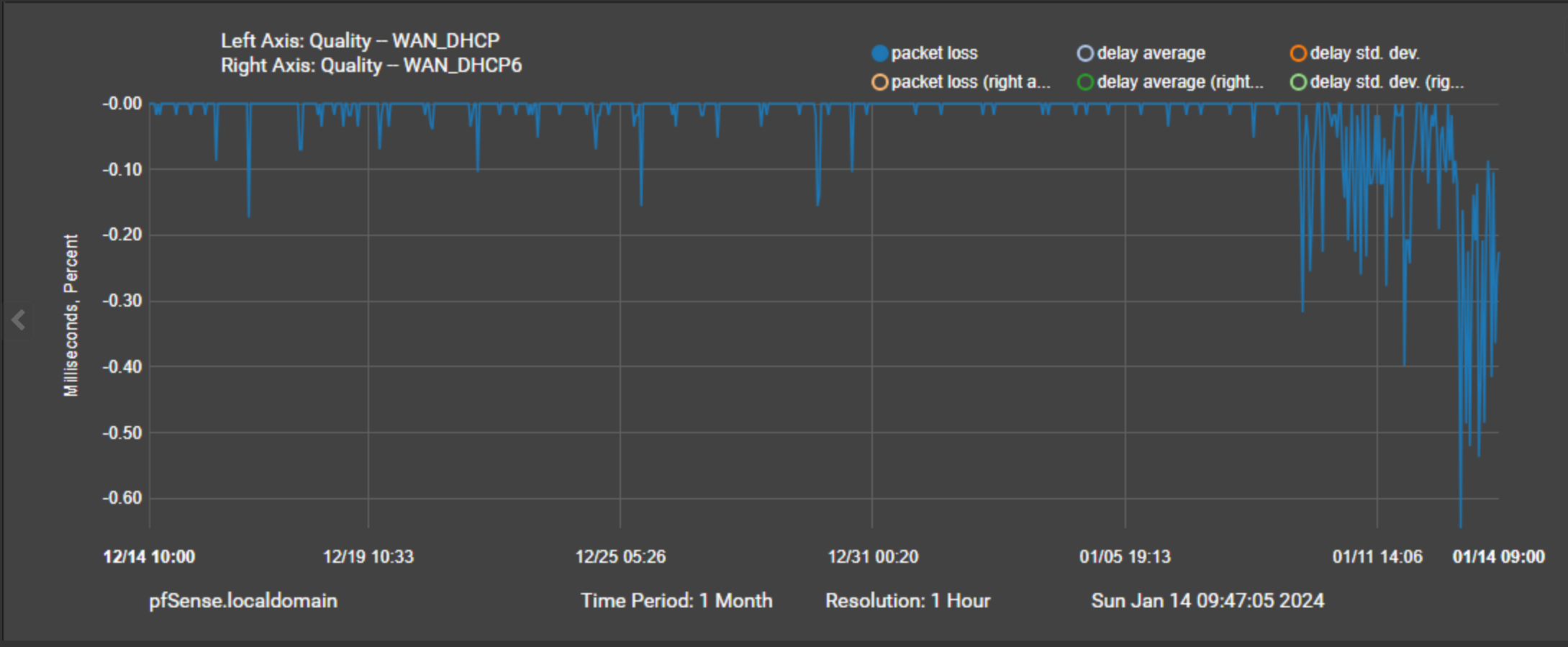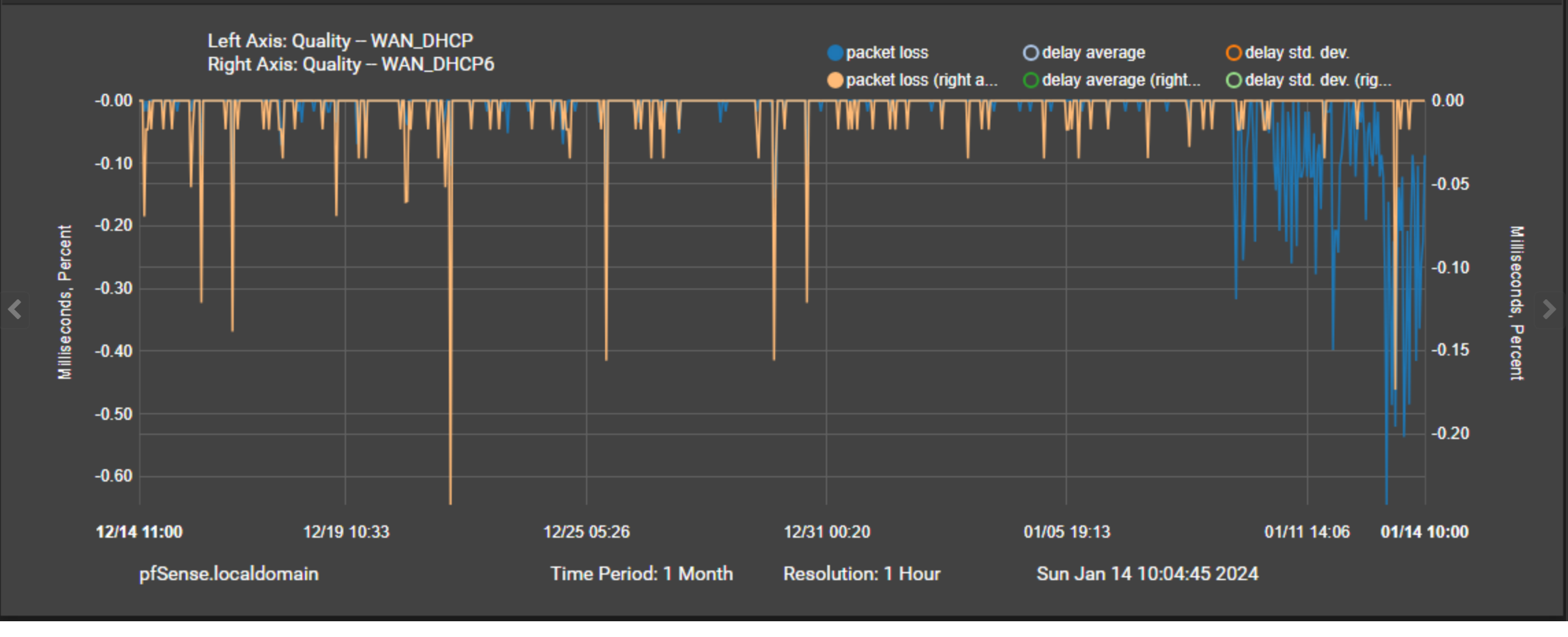WAN IPv4 Packet Loss Increasing; IPv6 Packet Loss ok
-
I monitor my ISP (FIOS) connection from my pfSense router which is directly connected to the ONT via CAT6. I do not use Verizon's FIOS router. The monitor address is a Verizon address that is upstream of the ONT (probably the GWR).
Starting on 2024-01-09, and continuing to today, I have recorded a degradation in IPv4 packet loss. This can be seen in this graph below.
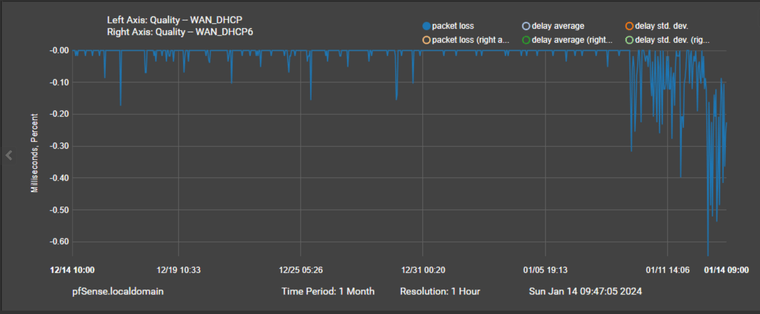
The max packet loss was 0.64% on 2024-01-13 at 12:00:00. As can be seen in the graph above, my average packet loss prior to 2024-01-09 was almost 0.0% but now it is approaching 0.30% and max packet loss was very minor and stable.
When I overlay the IPv6 packet loss data, we can see there has been no change to IPv6 packet loss. Max IPv6 packet loss is 0.24% and the average is 0.00%.
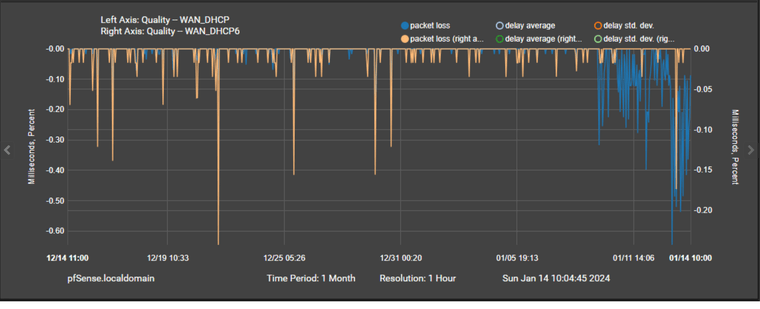
Currently, I am seeing intermittent max packet loss on IPv4 around 1.45% - max IPv4 packet loss is increasing.
There have been no changes to my local network hardware, software, or my usage. And I do not use shaping.
I posted this in the Verizon Forum and received the following response:
Sounds like you are pinging the GWR sitting behind the OLT. Nonetheless, since you are not using a Verizon router, the engineering won't be able to pull the technical logs pertaining to your connection for troubleshooting. The majority of connection logs are stored on the Verizon CPE (Customer Premise Equipment).
Verizon FIOS Terms:
ONT - Optical Network Terminal; a media converter that converts light signal to electrical signal (namely from 3 wavelengths of light to Ethernet, POTs, and/or Linear TV Signal, respectively); a device of white or black enclosure, serves as the demarcation point between the Verizon network and your home network.
OLT - Optical Line Terminal; the upstream device of numerous ONTs. An OLT contains multiple Line cards. Each line card terminates numerous PON lines.
GWR - Gateway Router - the network device that is upstream of the OLTs. This is a provider (VZ!) router that hands out DHCP WAN addresses, both IPv4 and IPv6. This device limits the number of WAN addresses being allocated.What could be causing the packet loss on IPv4 but not IPv6?
-
I would try running MTR against a few targets on the WAN side and see what it looks like.
You could just be seeing the gateway dropping pings under load.
-
@stephenw10 Here are the results:
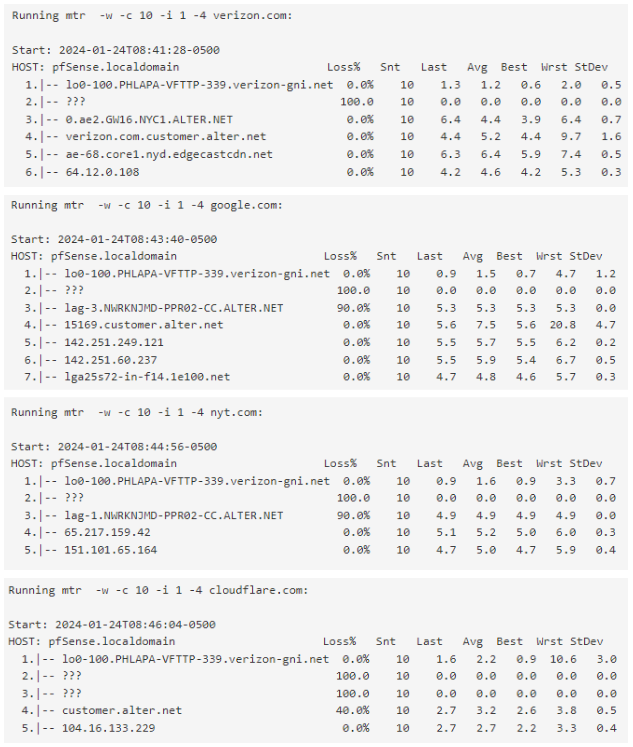
-
I would run it for a lot longer than 10s to get real data. Also try running it to the Verizon address that pfSense is monitoring.
If you run it from some other client behind pfSense you can run multiple sessions.
You might also try smokeping. That can be a useful tool to reveal issues like this.
-
@stephenw10 I ran MTR for ~24 hours, 1 second intervals, behind pfSense to the Verizon address pfSense is monitoring. There was very little packet loss.
The pfSense monitoring has improved also. So, I'm going to assume it was some change on Verizon's side and it has been resolved.
